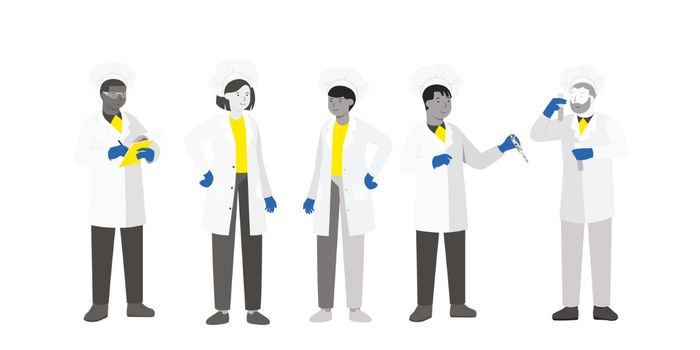Some Cases of Blindness are Linked to Gut Bacteria
Trillions of microbes live in the human gastrointestinal tract, and this community of microbes known as the gut microbiome has been linked to many aspects of human health. In surprising news, researchers have now connected gut bacteria to the loss of sight in some inherited eye diseases. This sight loss could potentially be treated with antimicrobial drugs as well, according to new research reported in Cell.
There are certain genetic mutations that can cause blindness, and which can be passed down from parents to their children. For example, the Crumbs homolog 1 (CBR1) gene is active in the retina, and encodes for a protein that is essential to eye function. The retina is a thin layer of cells on the back of the eye, and the blood-retina barrier ensures that only the right molecules can flow into or out of the eye.
Mutations in CBR1 have been linked to inherited eye diseases; they cause about ten percent of all Leber congenital amaurosis (LCA) cases and seven percent of all retinitis pigmentosa (RP) cases.
In this work, the researchers used a mouse model to show for the first time that CRB1 is also crucial to maintaining the integrity of lower portions of the gastrointestinal tract. It performs a similar function in the gut as it does in the eye: CRB1 helps control what moves between the gut and the body. Because there are so many microorganisms and the molecules they generate in the gut, it is extremely important to keep that microbiome sequestered.
But mutations in CRB1 seem to lower the body's barriers, and permit bacteria to move into the eye, where they can cause blindness. When there is a particular mutation in CRB1, the activity of the gene is significantly reduced, and the protective barriers in both the gut and eye become permeable, allowing gut bacteria to move to different parts of the body. In some cases of inherited eye disease, gut bacteria were found in damaged areas of the eye.
However, the investigators also determined that when the mouse model was treated with antibiotics, sight loss could be prevented in the animals, even though the protective barriers were not rebuilt. Now, the scientists are planning to see if these results also hold true for humans, and whether antibiotics or antimicrobials can be used to prevent blindness in inherited diseases that are linked to CRB1 mutations.
"Our findings could have huge implications for transforming treatment for CRB1-associated eye diseases. We hope to continue this research in clinical studies to confirm if this mechanism is indeed the cause of blindness in people, and whether treatments targeting bacteria could prevent blindness," said co-corresponding study author Professor Richard Lee of the UCL (University College London) Institute of Ophthalmology and Moorfields Eye Hospital NHS Foundation Trust.
"Additionally, as we have revealed an entirely novel mechanism linking retinal degeneration to the gut, our findings may have implications for a broader spectrum of eye conditions, which we hope to continue to explore with further studies."
Sources: University College London, Cell









